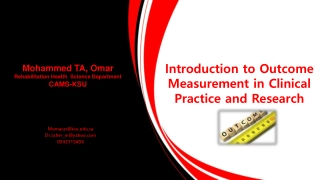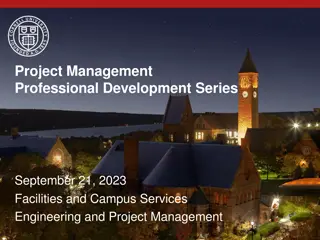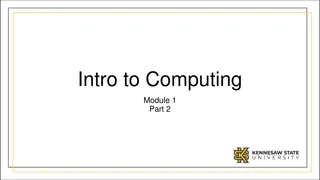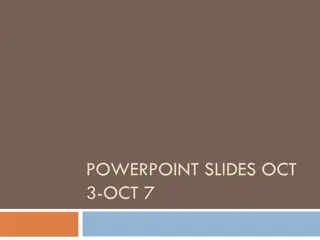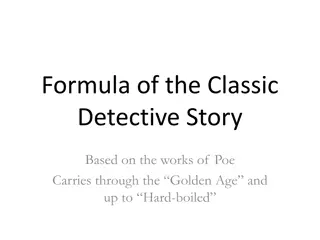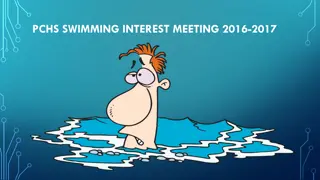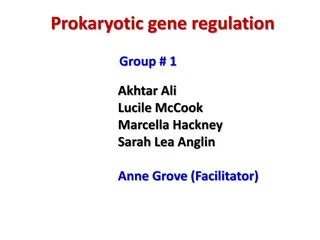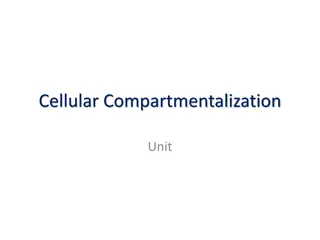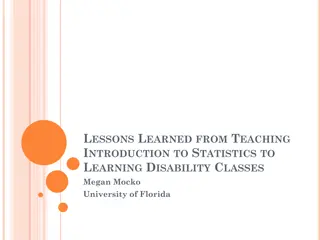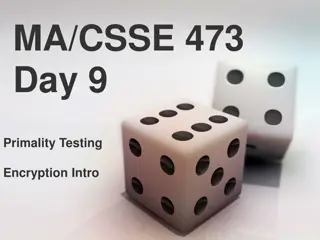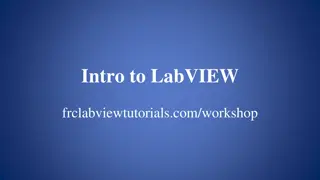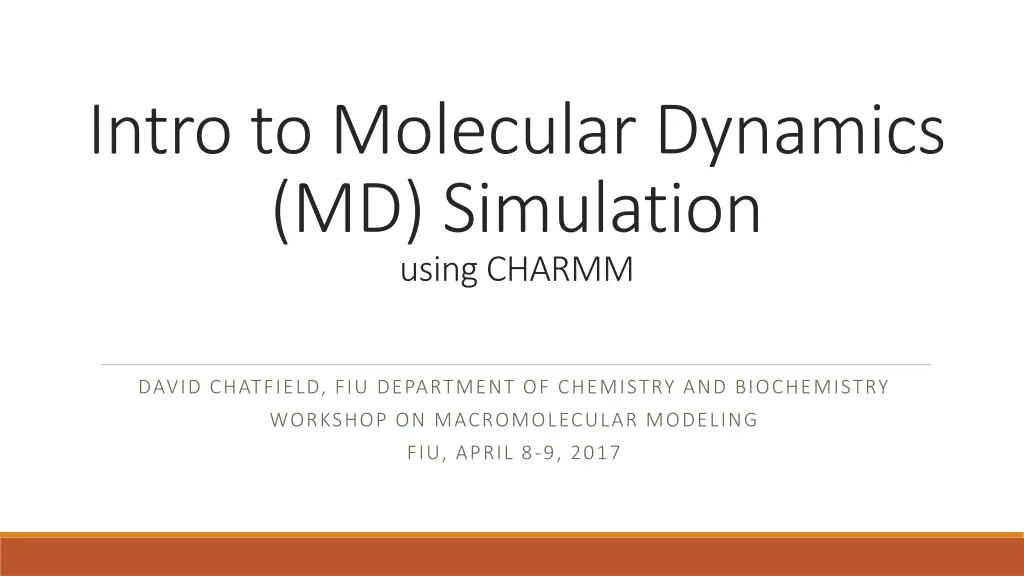
Introduction to Molecular Dynamics Simulation with CHARMM
Explore the principles and practical aspects of Molecular Dynamics (MD) simulation using CHARMM, covering topics such as force fields, bonded and non-bonded terms, computational cut-offs, and atom types. Gain insights into MD program structure, system preparation, running simulations, and analyzing results for macromolecular modeling.
Download Presentation

Please find below an Image/Link to download the presentation.
The content on the website is provided AS IS for your information and personal use only. It may not be sold, licensed, or shared on other websites without obtaining consent from the author. If you encounter any issues during the download, it is possible that the publisher has removed the file from their server.
You are allowed to download the files provided on this website for personal or commercial use, subject to the condition that they are used lawfully. All files are the property of their respective owners.
The content on the website is provided AS IS for your information and personal use only. It may not be sold, licensed, or shared on other websites without obtaining consent from the author.
E N D
Presentation Transcript
Intro to Molecular Dynamics (MD) Simulation using CHARMM DAVID CHATFIELD, FIU DEPARTMENT OF CHEMISTRY AND BIOCHEMISTRY WORKSHOP ON MACROMOLECULAR MODELING FIU, APRIL 8-9, 2017
Overview Principles of MD MD Program Structure System Preparation Running MD Analyzing Results
A. Force Fields Quantum mechanics (QM): too expensive for macromolecules Force fields: method of choice Constructed from experimental data and QM calculations on small molecules Principle of transferability atom type
Bonded and Non-bonded Terms ? = ???????+ ???? ??????
??????? ???????= ????? ?????? + ?????? ????+ ??? ????? + 2 ????? ?????? = ??? ?0 ????? 2 ?????? ????= ??? ?0 ?????? 2 ??? ?????= ??1 + cos ?? ? ?? ?????? A picture is worth a thousand words A picture is worth a thousand words
??????? Occasionally a few extra terms are included, e.g. ??????????(to maintain chirality & optimize fit to experiment) ????? ???????(to optimize ..) CMAP (numerical correction and optimize ..) 2 ??????????= ??? ?0 ????????? ???? ?2 ????? ???????= ???? ??????? ?????= ??????,? ????????
?????????? ???? ??????= ???? ??? ?????+ ?????????????? 12 6 ??? ??? ??? ??? ??? ??? ??? ????= ??? 2 ??? ?????? ???? ????? ???? ??????????????= 4??????? ??? ?????? ???? ????? rmin min
Cut-offs Reduce computational demands Makes ???? ???? precisely zero beyond pre-defined interatomic distance Shift method: modifies entire PES (downside: equilibrium distances slightly decreased) Switch method: modifies PES only over window (downside: too small a window can introduce strong, non-physical forces) Van der Waals: always used Electrostatics: sometimes used
Atom types Atom name Atoms classified by TYPE E.g. sp2 and sp3 carbons: different TYPES Parameters defined by TYPE Compromise between: Different properties for every conceivable environment (impractical) Only one property set per element only (too inflexibe) Atom type Topology file entry Carbon atom types (Parm22) Parameter file entry HA CT3 322.000 1.1110 re ( ) Kb (kcal/mol- 2)
B. Solvation Method 1: Periodic Boundary Conditions Central box surrounded by neighbors Only particles in central box modeled explicitly Particles in surrounding boxes are images Forces on primary particles include interactions with images Several lattices available: cubic, truncated octahedral, ??????????????? can be calculated without cut- offs using clever series expansion: EWALD method Cut-offs needed for ????
Method 2: Solvation Shell (droplet) Sphere of surrounding waters added to macromolecule Boundary potential (BP) restrains waters Trade-off: BP too small waters evaporate .. .. large extraneous forces
C. MD Algorithms Begin with Newton s equations of motion (1-D): ? = ??? = ?? ?? Integrate to solve for ? ? and ? ? : ? = ?? + ?? ? = ?? + ?? Discretize to create computer algorithm (Leap-Frog): ? ? + ?? = ? ? + ? ? +? ??? ?? ? ? +? ??? = ? ? ? ??? + ?(?)??
Principles of MD MD Program Structure System Preparation Running MD Analyzing Results
Essential MD data structures Parameter file Contains the force field: all bond, angle parameters etc. Topology file Contains data for essential moieties (amino acid residues, DNA bases, small molecules etc.): what is bonded to what, partial atomic charges etc. PSF Contains data for ENTIRE SYSTEM (amino acid residue or nucleotide sequence, solvent molecules; list of all bond, angle terms etc.) Coordinate file Contains x,y,z coordinates of all atoms in system
MD structure hierarchy for physical system PSF Segment 2 Segment 3 Segment 1 Residue 1 Residue 1 Residue 1 Residue 2 Residue 2 Residue 2 Residue 3 Residue 3 Residue 4
MD anachronisms PSF originally stood for Protein Structure File (the early development of MD codes focused on proteins). But now used to describe any complete physical system. Residue originally indicated amino acid residue. But now refers more generally to substructures from which segments are made. Nucleotide in DNA Individual lipid molecule in lipid bilayer Individual water in set of solvating waters
Principles of MD MD Program Structure System Preparation Running MD Analyzing Results
Structure of macromolecule X-ray crystallography Have to build some missing atoms, including almost all hydrogens Neutron diffraction Expensive (uses synchrotron radiation) but resolves the hydrogens Homology modeling
May need to complete or fix structure: Go through check list Add missing hydrogens (most not resolved in X-ray diffraction) Add missing heavy atoms (occasionally not resolved) Choose between duplicate sets of atoms (crystal structure disorder) Adjust protonation states for pH being simulated
Adjust location of proton to create correct hydrogen bonding patterns Where isoelectronic groups create experimental ambiguity, adjust for hydrogen bonding (affects His, Asn, Gln: 180o rotation may be needed) O NH2 N N R R R R N N NH2 O
Finish preparing system Solvate (add waters) Make neutral (add counter-ions) Adjust ionic strength? (more counter-ions)
Summary of preparation steps Read topology file Parameter file Sequence Generate PSF Patch to create disulfide bonds etc. Create data structure Read coordinates from pdb file (X-ray) Build hydrogen coordinates Add coordinates of other missing atoms Create coordinates Protonation states consistent with pH? Hydrogen bond patterns correct? Ambiguity due to isoelectronic groups (His, Asn, Gln)? Check structure Choose solvation method (periodic boundary conditions or droplet ) Add waters (PSF segment, coordinates) Add counter-ions to neutralize & adjust ionic strength Solvate & Neutralize
Principles of MD MD Program Structure System Preparation Running MD Analyzing Results
Initial Coordinates FLOWCHART OF AN MD SIMULATION Minimize Structure Initialize Assign Initial Velocities Heating Dynamics Equilibration Dynamics Equilibration Phase No Rescale Velocities Stable? Yes Production Phase Production Dynamics Analysis Analysis of Trajectories
Judging stability during equilibration Temperature steady or drifting? Energy fluctuations small (relative fluctuations < 10-4)? RMSD of coordinates steady or drifting?
Principles of MD MD Program Structure System Preparation Running MD Analyzing Results
Analysis Whatever you want! Equilibrium structure Sampling of hydrogen bonding patterns Loop conformations Stability of secondary structure Opening or closing of channels Migration of small ligands




